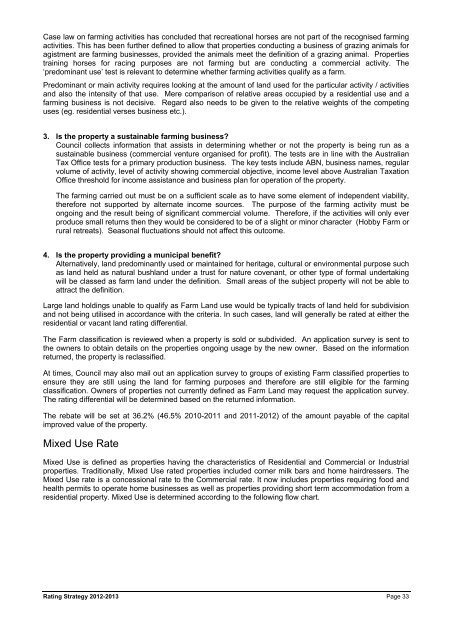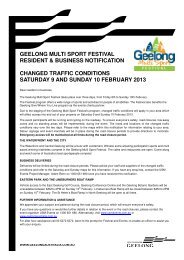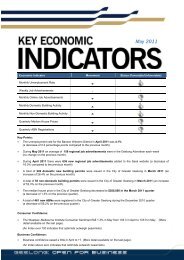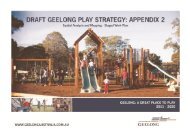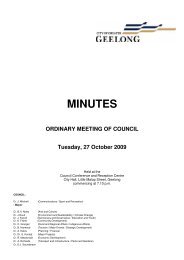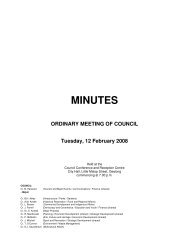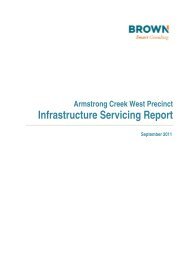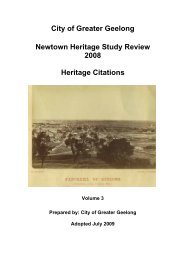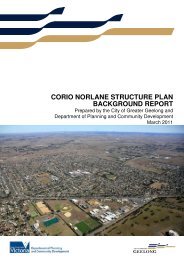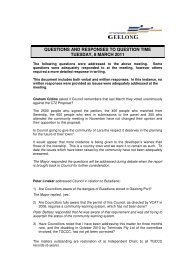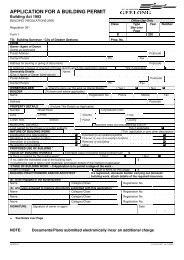CITY OF GREATER GEELONG 2012-2013 Rating StRategy
CITY OF GREATER GEELONG 2012-2013 Rating StRategy
CITY OF GREATER GEELONG 2012-2013 Rating StRategy
Create successful ePaper yourself
Turn your PDF publications into a flip-book with our unique Google optimized e-Paper software.
Case law on farming activities has concluded that recreational horses are not part of the recognised farming<br />
activities. This has been further defined to allow that properties conducting a business of grazing animals for<br />
agistment are farming businesses, provided the animals meet the definition of a grazing animal. Properties<br />
training horses for racing purposes are not farming but are conducting a commercial activity. The<br />
‘predominant use’ test is relevant to determine whether farming activities qualify as a farm.<br />
Predominant or main activity requires looking at the amount of land used for the particular activity / activities<br />
and also the intensity of that use. Mere comparison of relative areas occupied by a residential use and a<br />
farming business is not decisive. Regard also needs to be given to the relative weights of the competing<br />
uses (eg. residential verses business etc.).<br />
3. Is the property a sustainable farming business?<br />
Council collects information that assists in determining whether or not the property is being run as a<br />
sustainable business (commercial venture organised for profit). The tests are in line with the Australian<br />
Tax Office tests for a primary production business. The key tests include ABN, business names, regular<br />
volume of activity, level of activity showing commercial objective, income level above Australian Taxation<br />
Office threshold for income assistance and business plan for operation of the property.<br />
The farming carried out must be on a sufficient scale as to have some element of independent viability,<br />
therefore not supported by alternate income sources. The purpose of the farming activity must be<br />
ongoing and the result being of significant commercial volume. Therefore, if the activities will only ever<br />
produce small returns then they would be considered to be of a slight or minor character (Hobby Farm or<br />
rural retreats). Seasonal fluctuations should not affect this outcome.<br />
4. Is the property providing a municipal benefit?<br />
Alternatively, land predominantly used or maintained for heritage, cultural or environmental purpose such<br />
as land held as natural bushland under a trust for nature covenant, or other type of formal undertaking<br />
will be classed as farm land under the definition. Small areas of the subject property will not be able to<br />
attract the definition.<br />
Large land holdings unable to qualify as Farm Land use would be typically tracts of land held for subdivision<br />
and not being utilised in accordance with the criteria. In such cases, land will generally be rated at either the<br />
residential or vacant land rating differential.<br />
The Farm classification is reviewed when a property is sold or subdivided. An application survey is sent to<br />
the owners to obtain details on the properties ongoing usage by the new owner. Based on the information<br />
returned, the property is reclassified.<br />
At times, Council may also mail out an application survey to groups of existing Farm classified properties to<br />
ensure they are still using the land for farming purposes and therefore are still eligible for the farming<br />
classification. Owners of properties not currently defined as Farm Land may request the application survey.<br />
The rating differential will be determined based on the returned information.<br />
The rebate will be set at 36.2% (46.5% 2010-2011 and 2011-<strong>2012</strong>) of the amount payable of the capital<br />
improved value of the property.<br />
Mixed Use Rate<br />
Mixed Use is defined as properties having the characteristics of Residential and Commercial or Industrial<br />
properties. Traditionally, Mixed Use rated properties included corner milk bars and home hairdressers. The<br />
Mixed Use rate is a concessional rate to the Commercial rate. It now includes properties requiring food and<br />
health permits to operate home businesses as well as properties providing short term accommodation from a<br />
residential property. Mixed Use is determined according to the following flow chart.<br />
<strong>Rating</strong> Strategy <strong>2012</strong>-<strong>2013</strong> Page 33


